I sang “Katmandu” in Kathmandu. And I’m excited to be able to say that. However, of the pair of songs that share the name of the city, I kind of wish I’d gone with the other one.
So how did I come to find myself in Kathmandu, the Nepalese capital? Well, I was alighting there on my way to Bhutan, during an excursion to Asia in May 2017. Kathmandu is merely one of several cities from which you can fly to Bhutan’s international airport, which is in the town of Paro; but if Kathmandu is your point of departure, your flight path will include a segment during which you can enjoy a view of Mount Everest from above. So I availed myself of that flight option, reasoning that it might be the only time I would ever glimpse Everest from any altitude.
Monkeying around in Nepal
Now, Kathmandu itself is not the easiest of metropolises to reach — at least if you’re coming from North America. My itinerary was as follows: from my home base of New York City I flew to Beijing (which I had visited, and karaoked in, about a year earlier), and then after a couple of days there I proceeded to Bangkok. From Bangkok, I winged my way to Kathmandu.
Prior to my arrival, my preconceived vision of Kathmandu was of an exotic and mystical city, although admittedly I knew little about the place. When I got there, I found the streets to be dirty and dusty, and the traffic chaotic. I wasn’t a fan. Maybe I didn’t give Kathmandu enough of a chance; I’m not saying I wouldn’t return there if the opportunity arose. But it didn’t make a stellar first impression on me.
Incidentally, although Nepal contains some of the highest points on the planet (such as Everest — which straddles Nepal’s border with Tibet — as well as other portions of the Himalayan range), Kathmandu is situated in a valley called Nepal Mandala, and its elevation is a relatively pedestrian 4,600 or so feet. So I didn’t need to carry an oxygen mask around with me in Kathmandu. 🙂 Nor did I need to worry about falling prey to the altitude sickness that I succumbed to in Cusco, Peru in 2013.
A few highlights of K-k-k-k-k-k Kathmandu
Due to the transitory nature of my sojourn in Kathmandu, my itinerary allotted only about half a day for sightseeing. The attractions that I managed to check out during that brief interval were the Boudhanath Stupa, the holiest Tibetan Buddhist temple outside of Tibet; and the Swayambunath Stupa, an ancient temple popularly known as the “Monkey Temple” on account of its many simian residents.
Also in Kathmandu is a rather macabre yet sacred destination that my abbreviated schedule didn’t permit me to swing by: a temple where tourists can watch corpses being cremated. The Pashupatinath temple complex is an amalgamation of Hindu holy sites on the banks of the Bagmati River. Open-air cremations occur on pyres on the temple grounds along the Bagmati, and the ashes are then cast into the river. (Non-Hindus are not permitted access to the main temple, but can view the cremations from across the river.) More information on the site can be found here. I imagine that witnessing the incineration of cadavers would inspire deep thoughts about the nature and meaning of death — a subject about which Westerners tend to be squeamish and often prefer to avoid contemplating.
Kathmandu crooning
Whilst passing through Kathmandu I sought out the life-affirming activity of karaoke — aiming to make Nepal the first new country on my World Karaoke Tour since the United Arab Emirates had become no. 46 during the preceding January. The venue was a karaoke bar called Beta House. Accompanying me to Beta House were Manhendra, the Director of a company that runs tours in the region, whom I had met at the annual New York Times Travel Show in New York City several months earlier; and Manhendra’s friend, whose name I unfortunately have forgotten. (That’s what happens when it takes me 8 months to get around to writing about one of my karaoke appearances. 🙂 ) It was Manhendra who located Beta House for me; without his intimate familiarity with Kathmandu, I might not have found a karaoke joint in Nepal.
It turns out that there are 2 different songs called “Katmandu” (each without the “h” in the song title) – one by Cat Stevens, and one by Bob Seger. The 2 songs are completely unrelated to each other, having only their title in common. Impulsively, I opted to sing the Cat Stevens one in the Beta House. Here’s how my rendition of Cat Stevens went down:
And that is how, on Tuesday, May 23, 2017, Nepal became the 47th country in which I’d karaoked.
In retrospect, I wished that I’d chosen Bob Seger’s version of Katmandu instead of Cat Stevens’s. Exhausted from my extensive travelling of the previous several days, I hadn’t put much thought into my song selection, and had taken little time to compare the Cat Stevens song with the Bob Seger one prior to heading out for my evening of karaoke. Nostalgia may have been a contributing factor to my decision; during my university years, I had frequently listened to an album of Mr. Stevens’s greatest hits.
But the Seger tune is much more upbeat and fun. Even though I was singing to less than a packed house in Kathmandu, Mr. Stevens’s ode to the city was probably just a bit too mellow (a quality that applies to most of the tunes in Mr. Stevens’s oeuvre).
Here’s a video of Mr. Seger performing his own tribute to Kathmandu:
I still intend to sing Mr. Seger’s “Katmandu” when the opportunity presents itself, although doing so outside of Nepal — a country to which I probably won’t have the chance to return in the near future — won’t feel quite as meaningful to me.

Gazing upon Kathmandu from a scenic lookout point nearby to the “monkey temple.” Will I someday behold this view again?
I flew over Everest because it was there
One of the most rewarding aspects for me of hitting up Bhutan was the journey that brought me there. As advertised, my Druk Air flight from Kathmandu to Paro, Bhutan provided a unique aerial vista of the world’s tallest mountain. On the day of my flight, as is common for the time of year when it took place, extensive cloud cover obscured much of the Himalayas. But the jagged summit of Everest, which soars to a height of 29,029 feet, jutted up through the clouds. Here’s what I saw from my window seat:
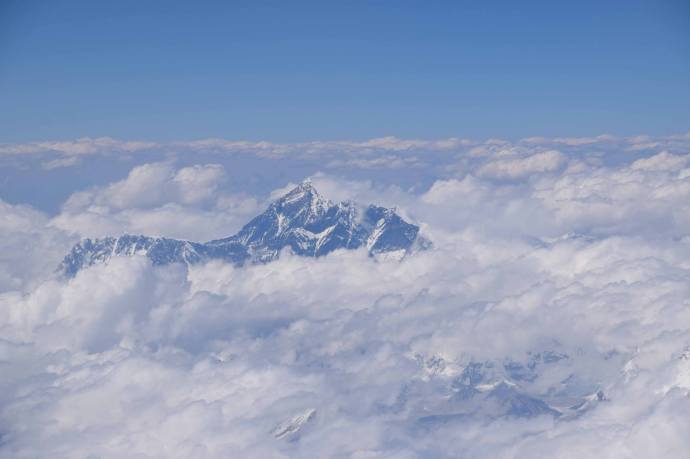
The pyramid-ish structure on the right side of the rock formation is the legendary Mt. Everest. The flat-topped structure adjacent to it is Nuptse Peak.
Paro is only 252 miles from Kathmandu as the crow flies, and soon I was landing at Paro International Airport, which is a reasonable candidate for the superlative of “most beautiful airport I’ve ever seen.” (In contrast, Kathmandu’s airport is among the worst I’ve encountered – and not only for aesthetic reasons. But I digress.)
I had entered the mysterious land of Bhutan.
Dragon my way to Bhutan
Nicknamed the “Land of the Thunder Dragon,” Bhutan is a landlocked nation in the Himalayas that’s home to fewer than 800,000 people. It’s also visited by fewer than 60,000 tourists per year. That number isn’t restricted through any specific quota, but via a policy that requires tourists to arrange their stay through a licenced tour company, and to spend a minimum of the equivalent of either $200 or $250 US per day (inclusive of lodging costs) while within Bhutanese borders, depending on the time of year of the visit. (The official Bhutanese currency is the ngultrum.) Of course, the resultant expense of a holiday in Bhutan discourages many budget-minded travellers. Tellingly, you won’t find any youth hostels in Bhutan.
Similar to Nepal, Bhutan’s topography features numerous Himalayan peaks — the highest of which tops out at a staggering 24,840 feet. The portions of the country that are most frequently visited by sightseers tend to have elevations ranging from about 3,900 feet to about 7,700 feet.
The real “happiest place on Earth”
Bhutan is a constitutional monarchy whose royal family since 1907 has been the House of Wangchuck. The country is perhaps best known for its official policy of promoting the Gross National Happiness (GNH) of its citizens, with GNH defined as “sustainable and equitable socio-economic development; environmental conservation; preservation and promotion of culture; and good governance.” But the national commitment to GNH is also emblematic, more generally, of a chill vibe that pervades Bhutan’s 14,824 square miles. So laid-back are the inhabitants — even when behind the wheel — that there’s not a single traffic light in the entire country. Even the capital city of Thimphu is devoid of traffic lights. In fact, Bhutan claims to be the only country in the world whose capital city boasts this distinction. The only traffic signal of any kind in Bhutan is a solitary kiosk in a roundabout in Thimphu; from that structure, police officers direct traffic via hand signals.
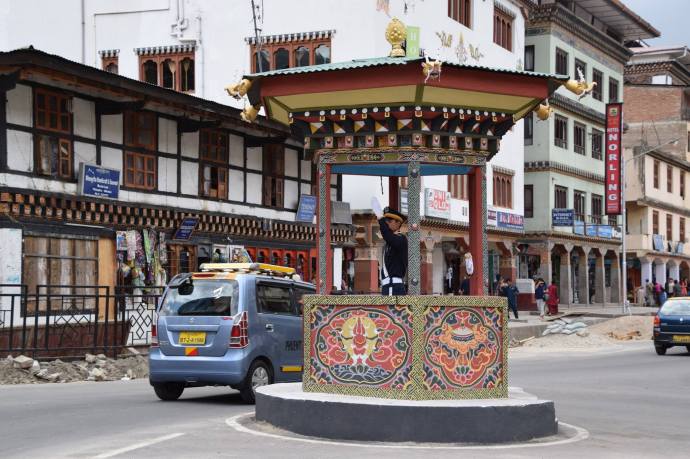
The humans making hand gestures inside this kiosk in Thimphu constitute the only traffic signal in all of Bhutan.
(Admittedly, the uncontrolled intersections are feasible partly because of the dearth of both personal and commercial motor vehicles in the country. An article in August 2015 reported that there were fewer than 75,000 motor vehicles in Bhutan – equating to less than 1 vehicle for every 10 people. The same article did note a surge in the importation of automobiles into Bhutan and concomitant worries about traffic congestion – a trend that, if sustained, could perhaps necessitate the installation of one or more traffic lights. In any event, the lack of traffic lights is surely also a consequence of the national attributes that would tend to render the citizenry less susceptible to road rage than drivers in other nations. As the emphasis on GNH reflects, the Bhutanese people are just really happy and nice to each other. This also explains why, for example, the rate of violent crime in Bhutan is extremely low.)
From the streets that (at least for now) lack traffic signals, you can take in some pretty amazing views. With Bhutan’s distinctive style of architecture and its ubiquitous and colourful Buddhist prayer flags, roadside tableaus like this one are common:
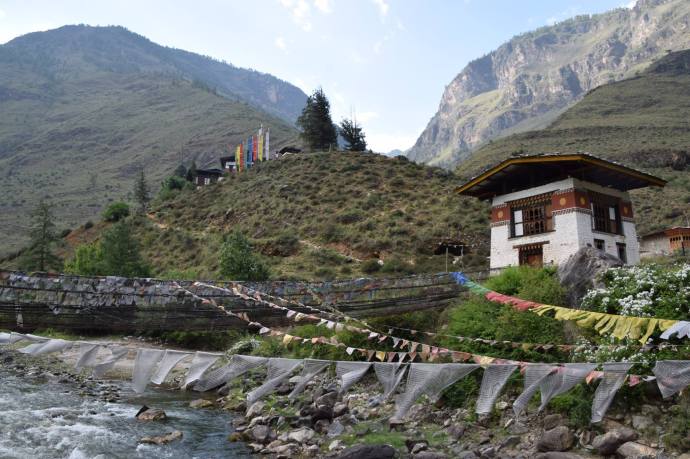
A view of the Tachogang Lakang iron suspension bridge, somewhere between Paro and Thimphu in Bhutan. The bridge was constructed in the 15th century and is no longer considered safe for people to walk across.
A very brief travelog: some top Bhutanese attractions
The most celebrated edifice in Bhutan is the Paro Taktsang, popularly dubbed the Tiger’s Nest monastery, in the Paro district. (At the top of this blog post, you can catch a photo of me in front of the Tiger’s Nest.) What makes the Tiger’s Nest especially renowned, and elevates it to the realm of bucket list entries, is the arduous trek required to reach it; that epic hike involves traversing some 2.6 miles each way, during which you ascend some 3,000 feet in altitude to the highest point of the climb. (After attaining that highest point, you actually descend some 600 steps before then climbing roughly 200 steps that culminate at the monastery.) The monastery is perched on a cliffside over 10,000 feet above sea level, and about 3,000 feet above the surrounding valley.
Among the other significant locations to which my tour guide took me was the Punakha Dzong (a dzong being a type of fortress). That particular dzong (found, naturally, in the town of Punakha) hosts royal weddings and coronations, even though it’s roughly a 2-hour drive from the capital city of Thimphu.
In Thimphu I visited one of that city’s newest additions: a giant Buddha, called the Buddha Dordenma. Fashioned of gilded bronze, it’s 169 feet tall (not including the meditation hall that serves as its base) — so in a city without skyscrapers, it really stands out. The Buddha Dordenma was just completed in 2015, and the grounds were still under construction as of last May.
Breaking bread with Bhutanese
I believe that one learns as much about a place from meeting its people as from seeing its landmarks. One of my favourite parts of my tour of Bhutan was a dinner I had with a local family in their farmhouse in Paro. Here I’m pictured with the father and mother of the family:
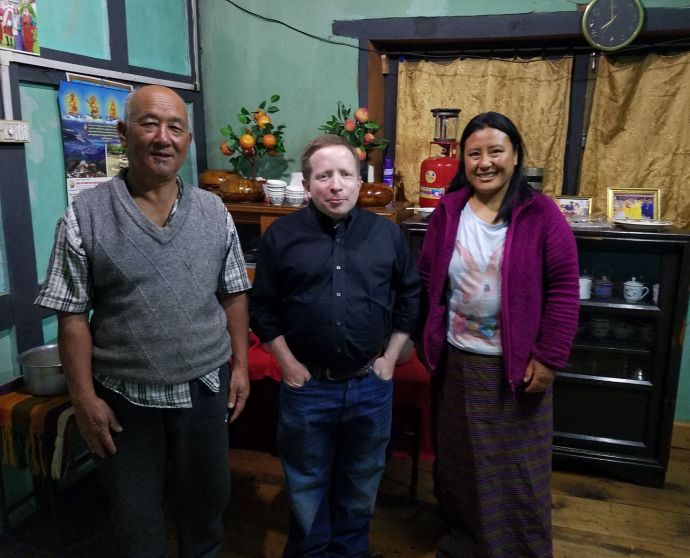
Me with with Nudip and Sangay, the patriarch and matriarch of a Bhutanese family with whom I dined at their farmhouse. (Two of their daughters and their granddaughter were also on hand for the repast.)
I liked that the Tiger’s Nest was visible from immediately outside their farmhouse. After dinner, when I was leaving with my tour guide and driver, it was cool to see the Tiger’s Nest and a few nearby buildings appearing as specks of light, high on the darkened mountainside.
Everybody Wangchuck tonight: an evening of karaoke in Bhutan
You’d figure that any country that was committed to the promotion of Gross National Happiness would offer karaoke. 🙂 And you’d be right. I sang in Thimphu one night, at an establishment bearing the delightful moniker of “The Magic Karaoke.” My song choice was Radiohead’s “Creep,” with that selection being influenced more by the limited variety of English-language songs available to me than by any considerations unique to the occasion. (I’d hoped for a second chance to perform Bob Seger’s “Katmandu,” since at least I was in a Himalayan kingdom in close proximity to the Himalayan kingdom of Nepal; but the songbook at The Magic Karaoke was bereft of anything by Mr. Seger. So my quest to find the right circumstances for a performance of that tune continues.) Anyhoo, the name of the KJ happened to be Wangchuck — the same as the surname of Bhutan’s royal family. Here you can watch me making making some karaoke magic at Wangchuck’s show:
And that is how, on Thursday, May 25, 2017, Bhutan became the 48th country on my World Karaoke Tour.
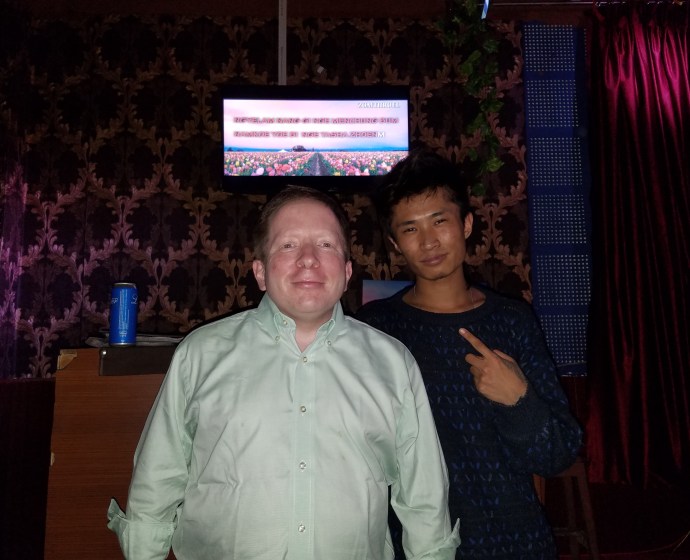
Me with the KJ at The Magic Karaoke. His name was Wangchuck, the same as the name of Bhutan’s royal family.
Several days later, I would arrive in the Mongolian capital of Ulaanbatar, and would face unexpected challenges as I sought to make Mongolia country no. 49 on my karaoke tour. If you’ve perused the page on this website that recaps my my World Karaoke Tour, I haven’t created much suspense for you; that page reflects that I did, in fact, karaoke in Ulaanbatar last May. But my next post gets into the details of how my quest for karaoke in that city proved surprisingly difficult, and how I did ultimately end up singing there. Plus, that next post will feature photos from Mongolia!
Are you curious about Bhutan?
Click here to follow me on Twitter! And click here to follow me on instagram!






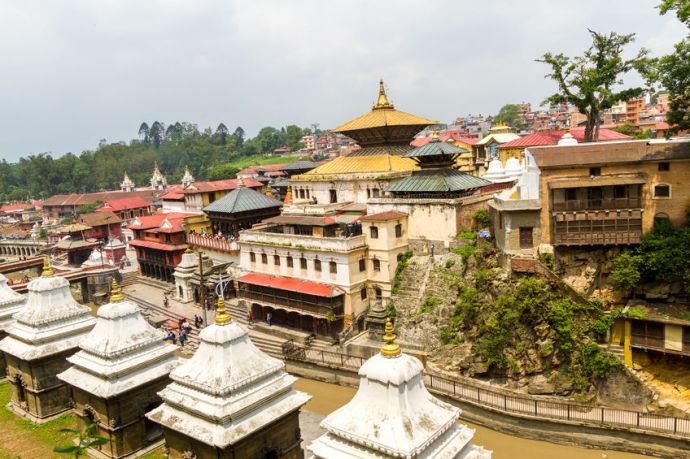
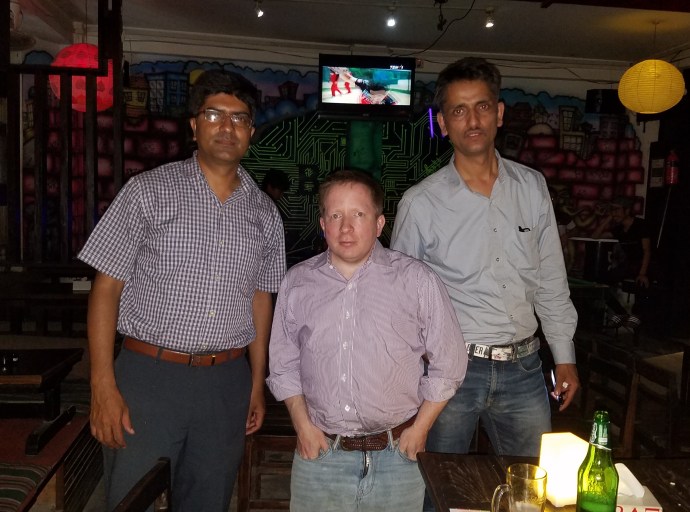

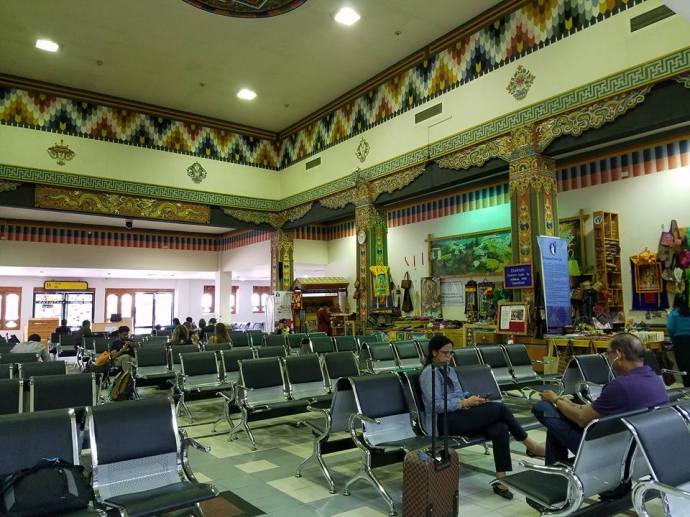
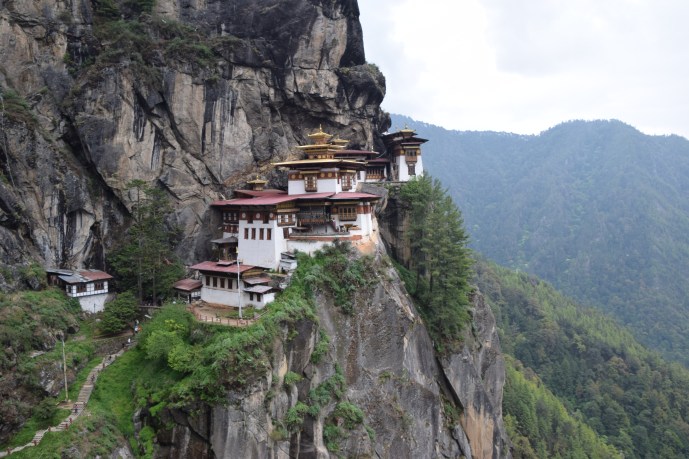
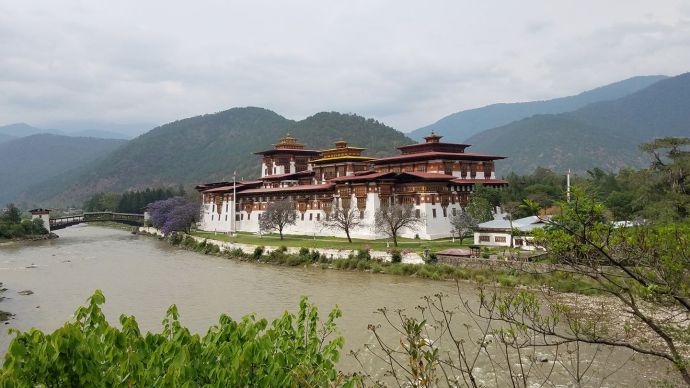






I love singing karaoke, so it’s a delight to read about your world tour quest. It’s especially interesting that you’ve added Nepal and Bhutan (and Mongolia) to the list because it’s intersting and unexpected. The two countries in this post aren’t countries when I think about where in the world you can sing karaoke.
I know it’s generic to say “I enjoyed this post,” but I really did! The karaoke perspective gives it a different twist than most travel posts and yet, you still fit in some interesting tidbits, like having dinner with a family in Bhutan. I had no idea Bhutan was so laid back and happy. At first, when you wrote about having to spend the equivalent of $200-$250 US per day, I mentally marked it off my list – that’s a hefty amount of money. However, the low amount of traffic, stoplights, and generally happiness (and beauty of the country) really appeal to me!
LikeLiked by 1 person
@Natalie: You can find karaoke in almost any country in the world these days.
Bhutan definitely has a laid-back culture although that aura of happiness is under stress as more people get automobiles, for example. But you can really experience the culture as it is, because the government makes sure not to allow the country to be overrun by tourists as has happened in so many other places. It’s not cheap to visit there (especially when you factor in all the plane flights to get there) but a very rewarding experience. Also, if you can go for longer than I did (I think my visit was for 5 nights), you can see the less-visited eastern side of the country which is more rural and would offer more chances to experience the country’s natural beauty.
LikeLike
Harvey this is awesome! I loved your travels cause it would probably be exactly how I envision doing it as well.
Although I am an avid bucket list adventure and backpacker, I have no desire to summit Everest. However, Nepal is still on my bucket list because I want to see the area and take in the culture. So bouncing around Kathmandu sounds perfect. Though I never knew their persuasion to have public cremations. That seems a bit deep to me but I guess you are right, it would allow people to stop and ponder their existence.
As for Bhutan, the more I read about it the more I want to go. I already had the Tiger’s Nest on my bucket list but I love how you were able to get involved with the locals in both dinner and your Karaoke.
This was a great post for me…thank you!
LikeLiked by 1 person
@Eric: the Tiger’s Nest is a worthy bucket list entry, but don’t underestimate the Punakha Dzong which is also quite impressive to see (although it’s at ground level so it doesn’t involve the epic hike that Tiger’s Nest does). And yeah, flying over Everest beats going to base camp (which takes a long time to get to and is at a very high altitude), let alone summiting it. 🙂 In Bhutan a lot of tour companies will offer the option of dining with a local family, so take advantage of that and ask them a lot of questions.
LikeLike
Looks like an amazing place to visit. The building and architecture look so very unique to its location.The Tigers’ nest would be special to visit. The effort to get there would be sapping. Did you get altitude sickness or loss of breath climbing at these heights?
LikeLiked by 1 person
@Wyld Family Travel: altitude sickness wasn’t an issue. The tour companies typically schedule the Tiger’s Nest climb for the last full day of your visit, so that by then you’re fully acclimated to Bhutan’s altitude. Most of the places you’re spending time at are over 7,000 feet, so after several days of that, ascending a few thousand more feet on that hike won’t be an issue for most people (although everyone reacts to high altitude differently). It was still a very strenuous climb physically, and it’s important to stay hydrated and bring snacks and rest up along the way as necessary.
LikeLike
What a lovely way to remember the places you visit – by singing a song there (or more). I love this idea – if only I could sing too! I liked your presentations as well – I hope I’ll visit them one day. And while I admit I like to see the famous tourist attractions (and to go off the beaten path) I don’t think I’d have it in me to visit the temple where you can see corpses cremated. Maybe just admire it from a distance!
LikeLiked by 1 person
@Loredana: If you’re not Hindu, you’re not allowed to visit that temple even if you want to (but you can watch the cremations from across the river).
I’m not sure what you mean when you write “I liked your presentations.”
LikeLike
What an exciting adventure you are on certainly interesting and quirky! I love how you combine your travels with karoke – that’s certainly one way to remember a destination.
Bhutan is my absolute dream destination to visit. Though it certainly doesn’t appear to be a cheap destination at $200 – $250 USD per day, but I have often found that the most difficult countries to visit are often the most rewarding. I’m sure experiencing dinner with a local family is something you will remember forever – does it feel genuine or aimed specifically at tourists?
Did you come across many other tourists during you visit or does it still feel off the beaten path? The country is certainly receiving more press these days but the numbers indicate still very few visit. I hope to visit soon!
LikeLiked by 1 person